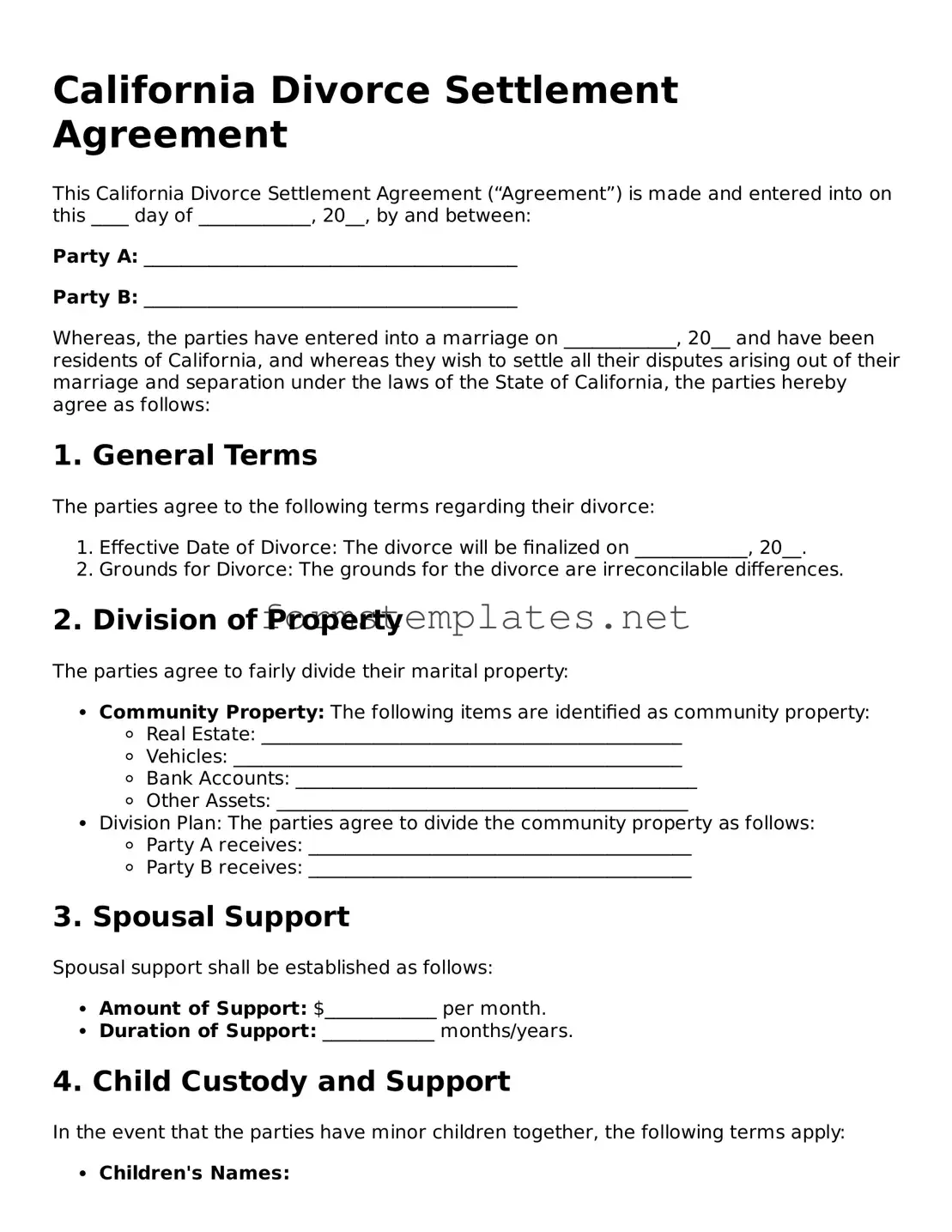California Divorce Settlement Agreement
This California Divorce Settlement Agreement (“Agreement”) is made and entered into on this ____ day of ____________, 20__, by and between:
Party A: ________________________________________
Party B: ________________________________________
Whereas, the parties have entered into a marriage on ____________, 20__ and have been residents of California, and whereas they wish to settle all their disputes arising out of their marriage and separation under the laws of the State of California, the parties hereby agree as follows:
1. General Terms
The parties agree to the following terms regarding their divorce:
- Effective Date of Divorce: The divorce will be finalized on ____________, 20__.
- Grounds for Divorce: The grounds for the divorce are irreconcilable differences.
2. Division of Property
The parties agree to fairly divide their marital property:
- Community Property: The following items are identified as community property:
- Real Estate: _____________________________________________
- Vehicles: ________________________________________________
- Bank Accounts: ___________________________________________
- Other Assets: ____________________________________________
- Division Plan: The parties agree to divide the community property as follows:
- Party A receives: _________________________________________
- Party B receives: _________________________________________
3. Spousal Support
Spousal support shall be established as follows:
- Amount of Support: $____________ per month.
- Duration of Support: ____________ months/years.
4. Child Custody and Support
In the event that the parties have minor children together, the following terms apply:
- Children's Names:
- ______________________________________________
- ______________________________________________
- Custody Arrangement: ____________ (joint custody or sole custody).
- Child Support: $____________ per month, to be paid by ____________.
5. Miscellaneous Provisions
The parties further agree to the following provisions:
- This Agreement represents the entire understanding between the parties.
- Amendments to this Agreement must be made in writing and signed by both parties.
In witness whereof, the parties have executed this California Divorce Settlement Agreement as of the day and year first above written.
______________________________________
Party A
______________________________________
Party B
______________________________________
Date
